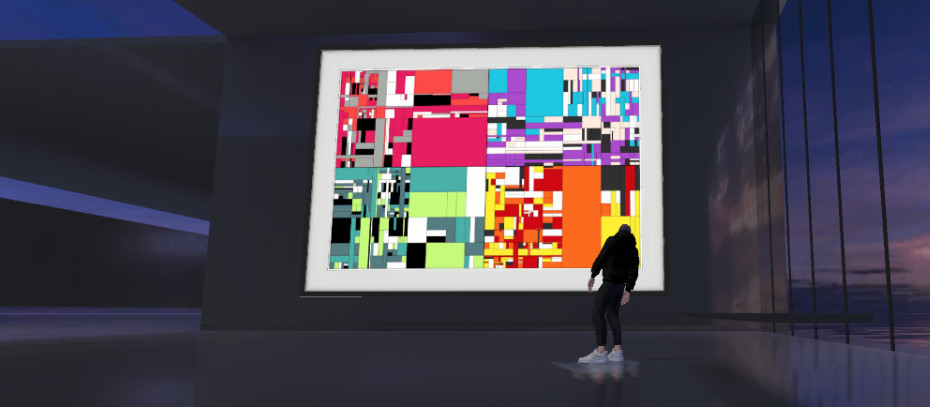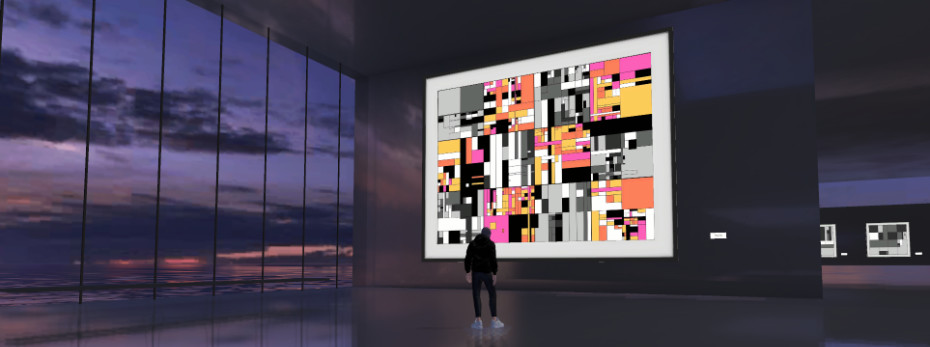On Chain Mondrian
A modern twist on modern artArt and code combined to reimagine a modern art classic.

10 reasons to collect
- On chain so it lives forever*
- Vector art to print at any size
- Beautiful designs created by code
- Launching with 0% royalty fees
- Full IP rights on the pieces you own
- Revealed the instant you purchase*
- Second Mondrian collection will be animated
- Third Mondrian collection will be hand curated by the artist
- Successful artist, single piece sold over $20,000
- 1 in 3 mints get x2 mint cost refunded back
Timeline
Here is the planned timeline for the three Mondrian collections.
On Chain Mondrian Genesis
This collection is 10,000 NFTs and is on chain. This means that the artwork is generated with blockchain contract code which will be permanent.

This mint will continue until all NFTs are claimed.
On Chain Mondrian Motion
This collection is 10,000 NFTs and each NFT will match the Genesis collection allowing you to hold or trade for a pair. For example, the number 1000 in each collection is a pair. You can time your mint to grab a pair or even time your mint to stop someone else from getting a pair! This collection is also on chain.
This mint will continue until all NFTs are claimed.
Mondrian Special
This collection is 256 NFTs and holders of a matching Genesis and motion NFT have a free mint per matching pair. This collection is off-chain due to the complexity of the image. The image is still stored as a vector allowing you to print at any size. If you have an office, shop or hotel and want to print a 5-metre version, you can!

Important dates:
- 20th July 2023: Free mint for pair holders (first come, first served)
- 27th July 2023: Public sale @ 0.5 ETH per NFT (if supply remains)
Live mint and reveal
The moment you purchase (mint) a piece it comes to life on the blockchain, you will not have to wait for a reveal. This is valid for collections 1 and 2, the 3rd collection will be minted blind and revealed when the collection is sold out.View pieces in the gallery
You can view some of the current pieces in our online virtual gallery. Walk around and view pieces from all 3 collections.
Refund system
Built into the contract is the world's first refund system. 1 in 3 mints will result in the holder getting x2 their mint cost back. This happens automatically, all on chain from funds stored in the contract. For example, if you mint an NFT at 0.1 ETH you could get a refund of 0.2 ETH effectively giving you a free NFT and 0.1 ETH. This adds some extra excitement to the mint process and you can see it all happen on Etherscan for full transparency.The artist
The art is created by David Minns who has a passion for contemporary art in digital and physical forms. David is also a highly experienced software developer and online entrepreneur. This combination of skill sets enabled such a project to be conceived and created.David has a long-term road map of creating multiple NFT collections that help raise awareness of the full collection.
Detail and quality
Collectors who have followed the creation process of this artwork will understand the attention to detail that has been undertaken. This is a hybrid project of art and software code. The code needs to be fast, clean, and efficient to work on the blockchain and the art has to look flawless.The artwork is created from an initial four squares from a canvas set at 256 pixels. The final result is vector based so doesn't have resolution limits but one is required during the creation. 256 was chosen as it divides without rounding issues, for example, 256, 128, 64, 32, 16, and 8. The first 25 iterations are focused on the four initial squares by diving each randomly in half either horizontally or vertically. Each new area is divided again and this process stops when the count reaches 25.
This first step layout is then used to create the final piece from a number of further iterations from a minimum of 40 to a maximum of 150 including the 25 used for the base design. During this process, any area that has a width or height less than 8 is skipped to avoid small slithers. Areas are selected at random and promoted to the top of the artwork.
There will be pieces of colour hidden underneath the final work which you will be able to see in the second release of the collection due to it being animated. The number of iterations is separated into 5 discrete traits of very low, low, medium, high, and very high. Generally speaking, a high iteration count will result in more areas but that may not be noticeable on a Genesis version. The animated versions will allow the viewer to see all of the areas.
Each area is assigned a random colour from a set of 25 predetermined colour palettes.
The colours
There are 25 palettes including red, yellow, blue, black (near black), and white that Mondrian is known for. The other 24 palettes all include nearly black and white and 3 additional colours. Each palette has its own name and the number of each is random. The law of averages would mean that there will be 400 of each palette. The colour palettes are shown below in groups of 5.

How to become an owner
To own pieces from these collections you can mint an NFT or purchase them on the secondary market after the mint process has started.About Piet Mondrain
The inspiration behind these NFT collectionsPiet Mondrian (1872-1944) was a Dutch painter who was a key figure in the development of modern abstract art. He is best known for his distinctive style of geometric abstraction, characterised by an emphasis on primary colours and the use of a grid of horizontal and vertical lines. His works have had a significant impact on the development of modern art and design, and continue to be influential to this day.
Mondrian was born in Amersfoort, a small town in the Netherlands. He began his artistic career as a landscape painter, but gradually moved away from representational art and began to experiment with abstraction. He was influenced by a number of artistic movements, including theosophy, cubism, and the Dutch De Stijl movement.
In the early 1920s, Mondrian began to develop the distinctive style that would become his trademark. His paintings were composed of grids of horizontal and vertical lines, with blocks of primary colors filling the spaces between them. He believed that this style was a reflection of the underlying principles of the universe and that it had a spiritual dimension that could be experienced by the viewer.

One of Mondrian's most famous works is 'Composition in Red, Blue, and Yellow,' which he completed in 1930. The painting is a prime example of his style, with a grid of black lines dividing the canvas into rectangular shapes that are filled with primary colours. The composition is simple and elegant, with a sense of balance and harmony that is typical of Mondrian's work.

Another important work by Mondrian is 'Broadway Boogie Woogie,' which he completed in 1942. This painting is notable for its use of a more complex grid, with lines cutting across the canvas. The colours are also more varied, with shades of blue and grey mixed in with the primary colours. The painting is a tribute to the energy and vitality of New York City, which Mondrian had visited in 1940.
Mondrian's style had a significant impact on the development of modern art and design. His use of a grid of lines and blocks of colour became a hallmark of the De Stijl movement, which he helped to found. The movement was influential in a number of areas, including architecture, interior design, and graphic design. Its emphasis on simplicity, clarity, and functionality continues to influence designers to this day.
Mondrian's work was also influential in the development of minimalism and other forms of abstract art. His emphasis on simplicity and the use of primary colours inspired a number of artists who came after him, including Ellsworth Kelly, Frank Stella, and Donald Judd.
Mondrian was also known for his philosophical and spiritual writings. He believed that his art was a reflection of the underlying principles of the universe and that it had a spiritual dimension that could be experienced by the viewer. He was deeply interested in theosophy, a spiritual movement that sought to reconcile science and religion, and he saw his art as a way of expressing its principles.
In conclusion, Piet Mondrian was a key figure in the development of modern abstract art. His distinctive style of geometric abstraction, characterised by an emphasis on primary colours and the use of a grid of horizontal and vertical lines, had a significant impact on the development of modern art and design. His works continue to be influential to this day, and his emphasis on simplicity, clarity, and functionality continues to inspire designers and artists around the world.